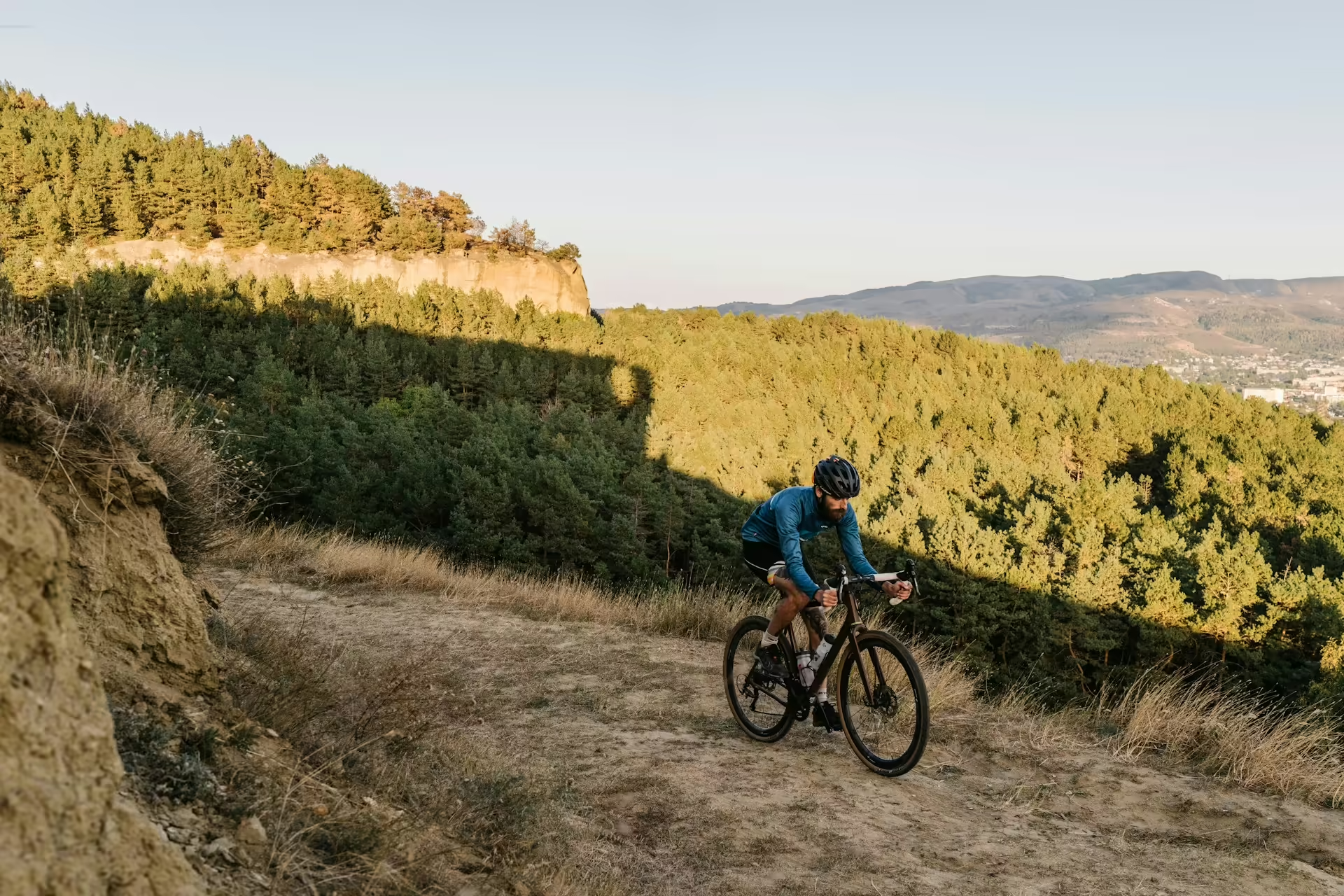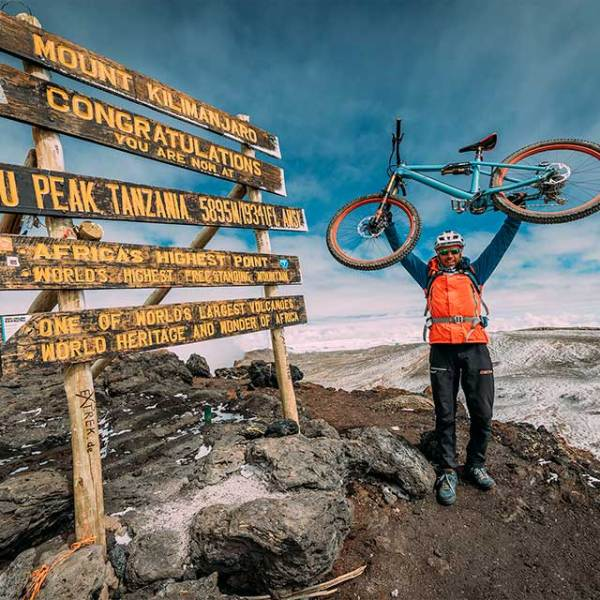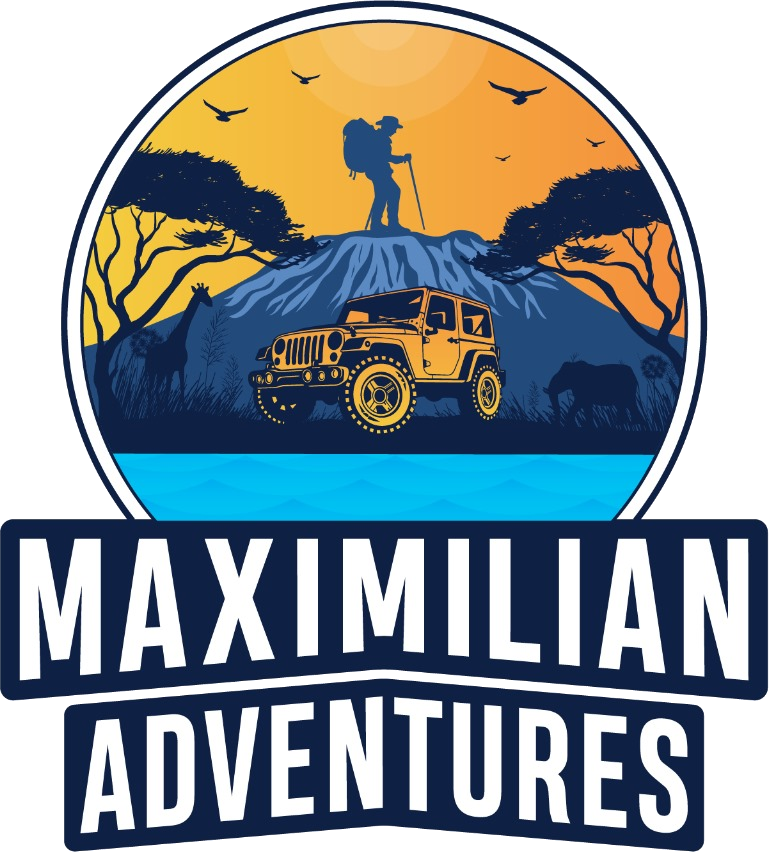
The Ultimate Guide to Mountain Biking on Kilimanjaro
Mount Kilimanjaro is a name that stirs the soul of every adventurer. Towering above the plains of Tanzania, it’s Africa’s highest peak and one of the Seven Summits—a true bucket-list destination. While most travelers come to hike Kilimanjaro’s iconic trails, there’s a growing group of thrill-seekers who are choosing a different kind of challenge: mountain biking on Kilimanjaro. This is no ordinary bike ride; it’s a unique adventure that blends the thrill of high-altitude cycling with the awe-inspiring beauty of one of the world’s most famous mountains.
Why Choose Mountain Biking on Kilimanjaro?
Mountain biking on Kilimanjaro offers an experience unlike any other. The Kilema Route, the only official biking trail on the mountain, presents an extraordinary opportunity to explore Kilimanjaro’s diverse landscapes—from lush rainforests and moorlands to barren alpine deserts. This route is not just about reaching a destination; it’s about the journey, one that challenges your physical endurance, biking skills, and mental resilience.
The appeal of this adventure lies in its combination of extreme physical exertion and the serene beauty of the environment. You’ll ride through different climate zones, each with its own distinct ecosystem, and witness views that are simply breathtaking. The solitude of the Kilema Route, away from the more crowded trekking paths, adds to the sense of adventure and discovery.
Understanding Kilimanjaro: The Terrain and Climate


Mount Kilimanjaro is a geological wonder. Standing at 5,895 meters (19,341 feet), it’s the tallest free-standing mountain in the world. The mountain’s terrain is incredibly diverse, with distinct ecological zones that you’ll encounter as you ascend.
Your journey begins in the rainforest zone, where the trail is surrounded by dense, green foliage. Here, you might spot blue monkeys, birds of prey, and other wildlife that inhabit this lush, tropical environment. The trail then takes you into the moorland zone, where the landscape changes dramatically. The air becomes cooler, the vegetation sparse, and the views start to open up, revealing the mountain’s rugged beauty.


As you continue to climb, you’ll enter the alpine desert, a stark and rocky landscape with little vegetation. The temperatures drop significantly, and the air becomes noticeably thinner, making each pedal stroke more challenging. The final zone, which most bikers will experience only if they also summit on foot, is the Arctic zone. This area is characterized by glaciers and ice fields, a harsh but stunning environment that few get to see.
The weather on Kilimanjaro is as varied as its landscape. You’ll start your journey in warm, humid conditions at the base of the mountain, but as you ascend, the temperatures drop, and the weather becomes more unpredictable. Rain is common in the rainforest, while the upper reaches can be cold, dry, and windy. Proper preparation for these varying conditions is crucial to your success.
The Kilema Route: Your Path to Adventure
The Kilema Route is a hidden gem on Kilimanjaro. It’s the only route on the mountain officially sanctioned for mountain biking, making it the go-to choice for those looking to tackle Kilimanjaro on two wheels. Starting at the Kilema Gate, this route offers a blend of challenging climbs, technical descents, and stunning views that make it a memorable journey.
The route begins at an altitude of around 1,800 meters (5,900 feet) and climbs steadily through the rainforest. The trail is a mix of dirt paths, rocky sections, and steep switchbacks that will test your biking skills and endurance. As you ascend, the terrain becomes more rugged, with loose rocks and gravel making the ride more technical.
One of the highlights of the Kilema Route is the Kibo Hut, located at 4,720 meters (15,486 feet). This hut serves as a base for both trekkers and bikers, offering a place to rest and acclimatize before continuing the journey. From here, bikers can enjoy a thrilling descent back down the mountain or, for those who wish to summit on foot, continue to Uhuru Peak, the highest point on Kilimanjaro.

Preparing for Your Kilimanjaro Bike Trek
Tackling Kilimanjaro on a mountain bike requires thorough preparation. This isn’t just a leisurely ride—it’s a physically demanding adventure that requires both fitness and mental toughness. Here’s what you need to know to prepare for the challenge.
Physical and Mental Preparation
Your body needs to be ready for the rigors of high-altitude biking. Start by building your endurance through regular cycling, focusing on long rides and steep climbs. Incorporate strength training to build the muscle power needed for the more challenging sections of the trail. Cardio workouts, such as running or swimming, will help improve your overall fitness and stamina.
Mental preparation is just as important. The altitude, cold, and physical exertion can take a toll, so it’s important to be mentally resilient. Visualization techniques, meditation, and positive thinking can help you stay focused and motivated throughout the trek.
Essential Gear and Equipment
Having the right gear is crucial for a successful Kilimanjaro bike trek. Your mountain bike should be sturdy and well-suited for rough terrain—consider a full-suspension bike for added comfort and control. A well-fitted helmet is essential for safety, along with gloves, knee and elbow pads, and protective eyewear.
Given the varying climates you’ll encounter, layering your clothing is key. Start with moisture-wicking base layers to keep sweat off your skin, add insulating mid-layers for warmth, and finish with a waterproof outer shell to protect against rain and wind. Don’t forget to pack a hydration system, such as a Camelbak, along with high-energy snacks, a first-aid kit, and a basic bike repair kit.
Acclimatization and Health Tips
Acclimatization is one of the most important factors for a successful Kilimanjaro bike trek. The high altitude can cause altitude sickness, which can derail your adventure if not managed properly. To acclimatize, consider arriving a few days early to get used to the altitude. Once on the trail, pace yourself—take it slow, stay hydrated, and eat regularly to maintain your energy levels.
Listen to your body. If you start feeling the symptoms of altitude sickness—such as headaches, dizziness, or nausea—communicate with your guide immediately. They’re trained to help you manage these symptoms and ensure your safety on the mountain.
A Day on the Kilema Route
Each day on the Kilema Route brings new challenges and breathtaking views. Here’s a glimpse of what a typical day might look like.
Your day begins early, with a hearty breakfast to fuel the day’s ride. You’ll start on the trail shortly after, biking through the rainforest or moorland, depending on your altitude. The trail can be steep and rocky, requiring focus and stamina as you navigate the terrain. You’ll take regular breaks to rest, hydrate, and take in the scenery.
As you climb higher, the air becomes thinner, and the riding more challenging. The satisfaction of conquering each section of the trail keeps you going. Evenings are spent at mountain huts or campsites, where you can relax, enjoy a warm meal, and share stories with fellow adventurers. The sense of camaraderie among those tackling the mountain together is one of the highlights of the journey.
Why Choose Maximilian Adventures for Your Kilimanjaro Bike Trek?
Choosing the right tour operator can make or break your Kilimanjaro experience. With years of experience leading Kilimanjaro expeditions, Maximilian Adventures is your best bet for a safe, successful, and unforgettable adventure.
We pride ourselves on our expertise and personalized service. Our guides are not only experienced but passionate about what they do, ensuring that you have the best possible experience on the mountain. We offer customized tour options tailored to your fitness level, preferences, and schedule, allowing you to make the most of your adventure.
Safety is our top priority. We use high-quality gear and follow strict safety protocols to ensure your trek is as safe as it is thrilling. We’re also committed to sustainability—our practices are designed to minimize our impact on the environment, helping to preserve Kilimanjaro’s unique beauty for future generations.
Booking Your Kilimanjaro Bike Trek
Booking your adventure with Maximilian Adventures is easy and straightforward. Simply visit our website, select your preferred dates and options, and secure your spot. We offer flexible payment options and a fair cancellation policy, giving you peace of mind as you plan your trip. Our pricing is transparent and includes everything you need for the trek: mountain bike, accommodation, meals, guide services, and park fees.
Conclusion
Mountain biking on Kilimanjaro is more than just an adventure—it’s a journey that will challenge you, inspire you, and leave you with memories that will last a lifetime. Whether you’re a seasoned biker or simply looking for a new way to experience one of the world’s most iconic mountains, this is an opportunity you won’t want to miss.
So why wait? Join Maximilian Adventures and take on the challenge of a lifetime. We’ll be with you every pedal of the way, helping you discover Kilimanjaro like never before.
Recent Posts
Where to Stay in Tanzania | Lodges, Resorts and Campsites
Why Chapwani Island Should Be on Your Travel List in 2025
Must-See Waterfalls in Tanzania: A 2025 Traveler’s Guide

Safari




